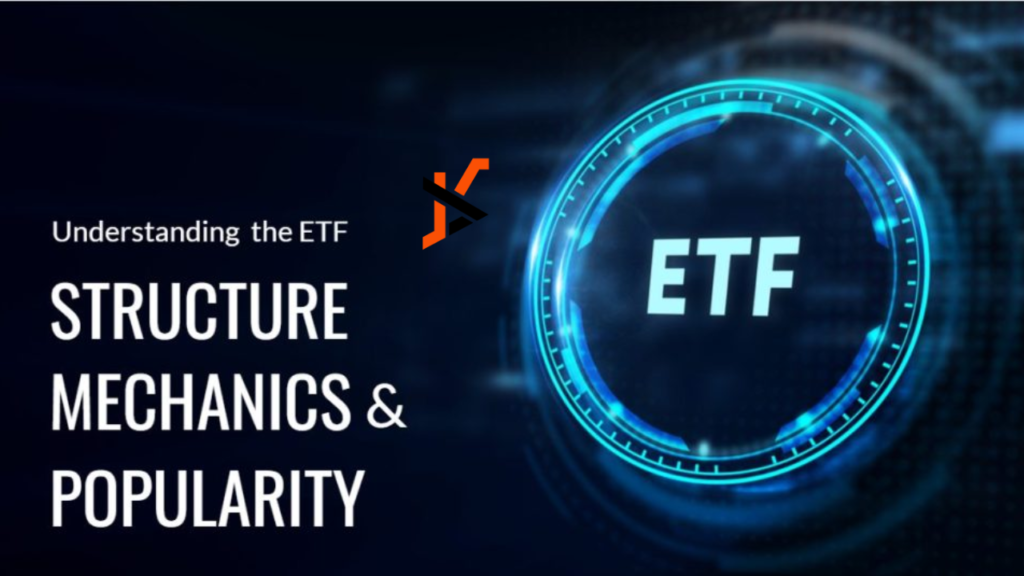ETFs, or Exchange-Traded Funds, are a popular investment vehicle used globally. These funds offer investors a way to access diversified portfolios while preserving the flexibility of trading on an exchange, like individual stocks. This differentiates ETFs from mutual funds, where entering and exiting the fund can take time, sometimes resulting in price slippage. Understanding the structures and mechanics of ETFs is crucial for investors looking to make informed decisions around this asset class.
Basics of ETF Structures
ETFs can be classified into physical and synthetic types. Physical ETFs hold actual securities or assets in their portfolios, providing direct exposure to the underlying assets. Synthetic ETFs, on the other hand, use derivatives such as swaps to replicate the performance of an underlying index without owning the actual assets.
Creation and Redemption Process
The process of creating and redeeming ETF shares plays a crucial role in the functioning of ETFs. Large financial institutions known as Authorized Participants (APs) are responsible for directly creating or redeeming ETF shares with the ETF issuer. This process entails exchanging a collection of securities for ETF shares during creation or ETF shares for a collection of securities during redemption. This mechanism is designed to maintain a close alignment between the ETF’s price and its Net Asset Value (NAV).
Authorized Participants and Market Makers
Authorized Participants play a key role in the ETF ecosystem by facilitating the creation and redemption. They help maintain liquidity in the ETF market and ensure efficient price discovery. Market makers, who are responsible for quoting bids and asking prices, provide liquidity to ETF investors by facilitating trading on stock exchanges.
Understanding Net Asset Value (NAV) and Intraday Pricing
An ETF’s Net Asset Value (NAV) represents its assets minus liabilities, divided by the number of outstanding shares. Intraday pricing allows investors to buy or sell ETF shares at prices close to NAV throughout the trading day, providing transparency and liquidity.
Legal and Regulatory Framework
ETFs in the UK are regulated by authorities such as the Financial Conduct Authority (FCA) and comply with European Union regulations like UCITS (Undertakings for Collective Investment in Transferable Securities) for cross-border operations.
Key Regulations Impacting ETF Operations
Regulations cover areas such as fund structure, disclosure requirements, investor protection, risk management, and transparency. ETF issuers and managers must adhere to regulatory guidelines to ensure investor confidence and market integrity.
Compliance Requirements for ETF Issuers and Managers
ETF issuers and managers must comply with regulatory requirements related to fund registration, portfolio management practices, reporting standards, and investor disclosures. Compliance ensures transparency, accountability, and investor protection.
Portfolio Composition and Index Tracking
Index-based ETFs track specific indices, exposing investors to broad market segments or thematic investment themes. Actively managed ETFs, in contrast, involve fund managers making investment decisions based on market analysis and investment strategies, offering potential outperformance but with higher management fees.
Portfolio Rebalancing and Tracking Error
ETFs periodically rebalance their portfolios to maintain alignment with their underlying indices or investment objectives. Tracking error measures the deviation in performance between an ETF and its benchmark index, influenced by factors such as transaction costs, portfolio turnover, and market conditions.
Importance of Benchmark Selection in ETFs
The selection of a suitable benchmark index is critical for ETF performance. It determines the ETF’s sector exposure, risk profile, performance expectations, and tracking accuracy. When evaluating ETFs, investors should assess the benchmark’s relevance, methodology, and historical performance.
Trading and Liquidity
ETF shares can be traded on both primary and secondary markets. Primary market trading involves APs creating or redeeming ETF shares directly with the issuer, while secondary market trading occurs between investors on stock exchanges. Secondary market trading provides liquidity and price discovery for ETFs.
Market Makers’ Role in ETF Liquidity
Market makers play a crucial role in ETF liquidity by quoting bid and ask prices, facilitating buy and sell orders, and narrowing bid-ask spreads. They enhance market efficiency, reduce trading costs, and ensure continuous trading in ETFs.
Bid-Ask Spreads and Trading Costs
Bid-ask spreads denote the disparity between the maximum price a buyer is prepared to pay (bid) and the minimum price a seller is willing to receive (ask). Reduced spreads signify enhanced liquidity and reduced investor trading expenses, fostering increased market involvement and streamlined ETF trading processes.
Evaluating ETF Performance
Investors can use various metrics to assess ETF performance, including Total Return (including dividends), Price Return (excluding dividends), Sharpe Ratio (risk-adjusted return), Alpha (excess return relative to the benchmark), Beta (volatility relative to the market), Standard Deviation (volatility), and Information Ratio (risk-adjusted excess return).
Benchmarking Against Index Returns
Benchmarking ETF performance against index returns provides insights into tracking accuracy, investment outcomes, and portfolio management effectiveness. Tracking benchmarks over different time horizons helps evaluate consistency and predictability in ETF performance.
Conclusion
Understanding ETF structures and mechanics is essential for investors navigating the complexities of the ETF landscape in the UK. By grasping the nuances of ETF types, creation processes, regulatory frameworks, portfolio management strategies, trading dynamics, tax considerations, fees, risks, performance evaluation metrics, advanced strategies, and recent market trends, investors can make informed decisions, optimize investment outcomes, and build diversified and resilient portfolios aligned with their financial goals and risk tolerance.
Continued education, due diligence, and staying updated on market developments are key pillars of successful ETF investing in the UK, ensuring investors navigate market opportunities and challenges effectively.

